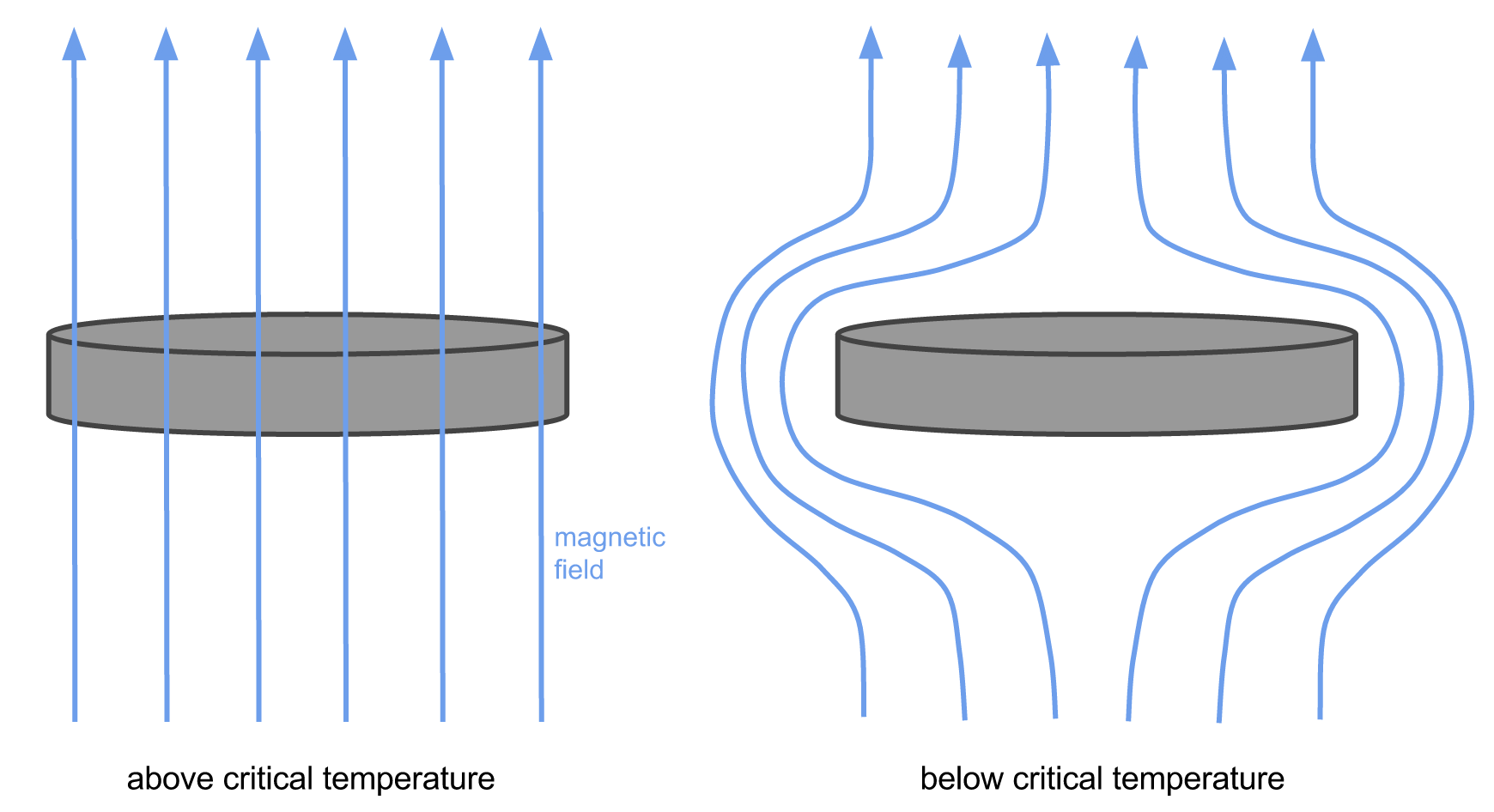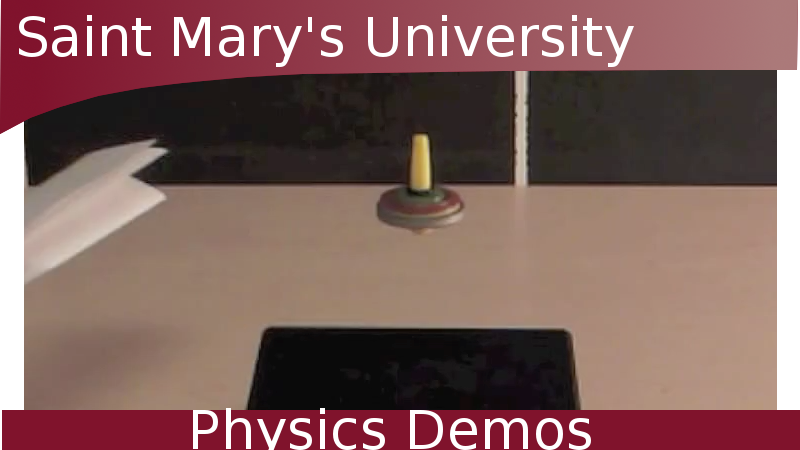Description:
A superconductor cooled below its critical temperature will levitate atop and travel along a track made of neodymium magnets.
Watch Video:
Other Demos of Interest:
Possible Incorporated Topics:
- magnetic fields
- Meissner Effect
- superconductivity
- magnetism
- induction
Theory:
Superconductors exhibit by two unique characteristics when cooled below their critical temperature:
- Superconductors pass current without energy loss. (They have zero resistance.)
- A superconductor is a perfect diamagnet; it repels all applied magnetic field.

This repelling of the applied magnetic field pins the superconductor in place, allowing it to levitate above a magnet.
The superconductor can move in the direction where the magnetic field does not change. On a magnetic track with a uniform magnetic field, this is along the track. Thus, the superconductor will travel along the track when pushed.
When the superconductor warms up above its critical temperature it does not exhibit these qualities.
Apparatus:
- ceramic YBaCuO superconductor
- liquid nitrogen (and appropriate safety supplies: safety goggles and cryogenic gloves)
- neodymium magnets
Procedure:
- arrange the neodymium magnets to create a track
- note: the magnets must all be aligned in the same direction to create a uniform magnetic field
- using liquid nitrogen, cool the superconductor below its critical temperature
- place the superconductor on the track and watch it levitate!
- pushing the superconductor will cause it to travel along the track






